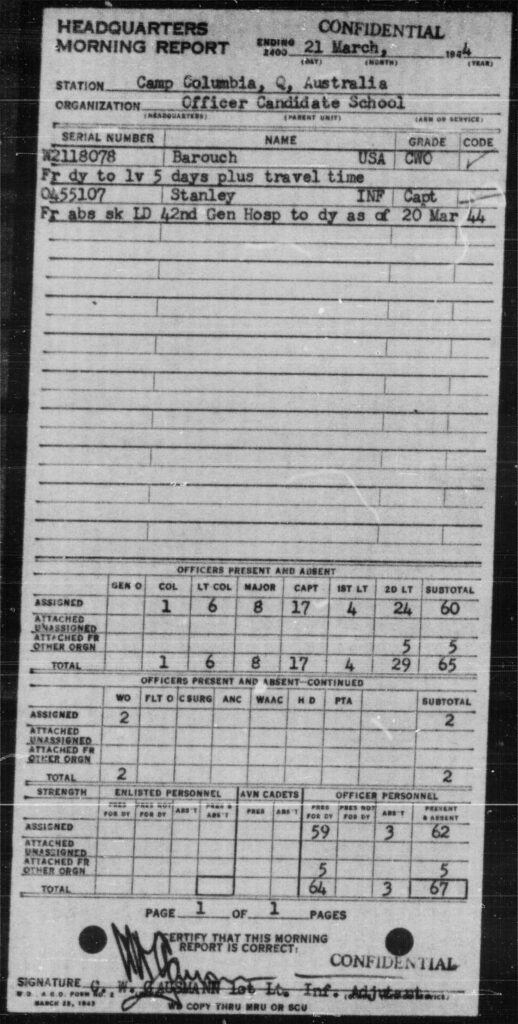
Morning Reports in the U.S. Army were daily administrative documents used to track and report personnel and unit activities. These reports, maintained operational planning, and record-keeping. They are now considered valuable historical resources for research, including genealogy and military history.
Key Features of Morning Reports:
- Personnel Changes: Morning reports recorded details of personnel assignments, transfers, promotions, demotions, discharges, deaths, absences (e.g., due to illness, injury, or leave), and new arrivals.
- Daily Updates: They were completed daily by the unit’s clerk or administrative officer and submitted up the chain of command.
- Unit Status: In addition to personnel changes, morning reports sometimes included information on unit readiness, activities, and movements.
- Format: Morning reports were typically concise and followed a standardized format. They included:
- The unit name and location.
- The date of the report.
- Changes in personnel, with names and service numbers.
- Uses:
- Administrative: To ensure accurate payrolls and personnel records.
- Operational: To track unit strength and availability for assignments.
- Historical and Genealogical: Modern researchers use these reports to trace individual service members’ military careers or to reconstruct unit histories.
- Supersession: Morning reports were eventually replaced by more advanced personnel tracking systems, such as automated databases and integrated personnel systems.
Accessing Historical Morning Reports
Morning reports from the U.S. Army can often be found in archives such as the National Archives and Records Administration (NARA) in the USA. They are not digitised widely, but here a few links to some of the digitised documents that are relevant to Camp Columbia:
Morning Reports for November 1943: Roll 516 (4 of 4)
Morning Reports and other documents relevant to Camp Columbia
